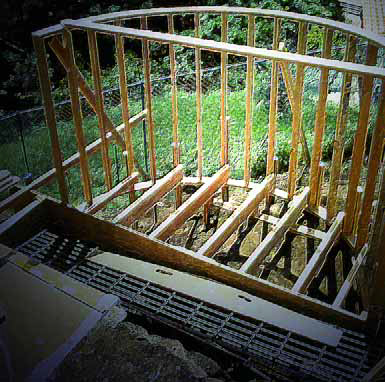Pools & Spas
Recent times have seen the introduction to the pool/spa industry of a new breed of hydraulic pumps that use what is known as 'variable frequency drive' technology. Here, watershaper, hydraulics expert and Genesis 3 co-founder Skip Phillips describes why he believes these devices, which have been used successfully for years in other industries that demand hydraulic efficiency, represent the future for pools, spas and other watershapes. For all the progress made in recent years to change the nature of the game, to this day I still see situations in which pumps, filters and other system components for pools, spas and other watershapes have, hydraulically speaking, been completely
Working in constrained spaces is entirely different from tackling projects that unfold in pastures where the only boundary might be a distant mountain or an ocean view. Indeed, in small areas that may be defined by fencing or walls or adjacent structures, the constrained field of view offers substantial aesthetic challenges to the designer in that every detail, each focal point, all material and color selections and every visual transition will be seen, basically forever, at very close range. When you're working small spaces, in other words, there's literally not much room for error. In this smaller context, each and every decision watershapers and clients make will subsequently be in direct view, and it's likely that each detail will take on special significance for the clients, positive or negative, as they live with the watershape over time. And on many occasions, what we're asked to start with as designers leaves much to be desired, including spaces already vexed by sensations of confinement, closeness or downright claustrophobia. To illustrate what I mean, let's take a look at two projects I recently completed in smallish yards for clients who wanted to
When we first began collaborating on projects with top-flight architects, landscape architects and landscape designers several years ago, for the most part our role in terms of design was fairly limited: We'd receive requests for bids and proposals based on plans of varying detail, and our role was that of faithful installers of the design. On occasions, of course, we'd also refer our own prospective clients to those same designers, who would generate plans that we would in turn estimate and very often install. We still work that way, but as we've built our ties to these accomplished artists, we've become aware that our role in their projects has been growing, even to the point where we are now being asked in many situations to offer our own design ideas. We're also seeing that, when on-site decisions must be made, these designers are
Working successfully with hydraulic systems requires two things: Understanding the definitions of the basic factors involved in hydraulic calculations and seeing how those values relate to and influence each other in the real world. The last installment in this series of articles focused on the relationship between flow and velocity with respect to water. The related concept we’ll explore this time takes our understanding of that key relationship a step farther by exploring a specific pair of additional relations summarized by
'I want the house to look as though it is floating on water." That was what architect Victor Canas told me when I was called out to visit this site on the northwestern coast of Costa Rica. It was a brilliant idea, certainly one that befitted the spectacular mountaintop setting and its breathtaking 360-degree views of rugged coastline, forest greenery and assorted perspectives to horizons in all directions. I had the advantage in this case of
This project was all about fun and finding ways to infuse watershapes and the overall landscape with childlike senses of playfulness and wonder. At a glance, of course, it's obvious that this particular approach wouldn't work for too many clients, but in this case, we were working with a woman who wanted her yard to express her love of color, her sense of humor and her unparalleled inclination toward the unusual. From our first meeting, I knew that this was someone who wouldn't settle for anything that even approached the ordinary. Maybe it was the 12-foot-tall fiberglass chicken she'd placed in her front yard or the life-size hippopotamus in the backyard or her wildly eclectic taste in art and interior furnishings or her fittingly off-beat
One of the things I've referred to repeatedly through the years is my interest in quality forming for watershapes. I look at it this way: If the job is about creating quality reinforced-concrete structures, then precisely controlling their dimensions and contours stands at the very heart of the art and craft of watershaping. And all I'm recommending here is simply following the lead of the experts who install building foundations and structural walls by using completely rigid materials and support frameworks. To drive that point home, I want to discuss the forming of one specific detail - and define a right way of getting it done. One of my trademarks is the fact that I build many pools that are
One of the things I've referred to repeatedly through the years is my interest in quality forming for watershapes. I look at it this way: If the job is about creating quality reinforced-concrete structures, then precisely controlling their dimensions and contours stands at the very heart of the art and craft of watershaping. And all I'm recommending here is simply following the lead of the experts who install building foundations and structural walls by using completely rigid materials and support frameworks. To drive that point home, I want to discuss the forming of one specific detail - and define a right way of getting it done. One of my trademarks is the fact that I build many pools that are




















